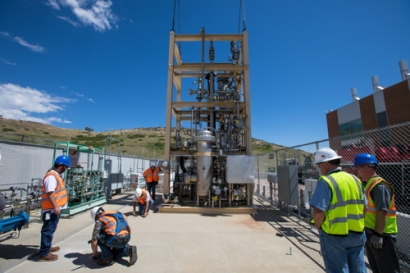
Power-to-gas technology uses renewable electricity to power an electrolyzer, which splits water to produce hydrogen. The hydrogen is then combined with carbon dioxide and fed to a biomethanation reactor where it is converted into renewable natural gas, or RNG, by special micro-organisms. RNG can be used in any application currently served by natural gas.
A study conducted by Lawrence Berkley National Lab showed that by 2025, between 3,300 and 7,800 gWh of excess solar and wind energy will be curtailed in California. If that excess energy was converted to methane through the biomethanation process and stored as renewable natural gas, it would provide enough energy to heat 158,000 to 370,000 homes or provide electricity to 80,000 to 187,000 homes.
The pilot project will be used to help assess the commercial viability of this power-to-gas approach to energy storage and provide insights into potential megawatt-scale system designs. The research will also test how effectively the microbes convert hydrogen to methane and how efficiently the storable methane can be converted back to electricity. Tests will also examine the potential of power-to-gas technology to store large quantities of renewable energy for up to an entire year and how it compares in performance and cost to battery storage.
"Power-to-gas technology can significantly increase the overall amount of renewable energy we use, by providing an economical method of storing excess solar-and wind-generated electricity," said Jeff Reed, director of business strategy and advanced technology at SoCalGas. "And this technology takes advantage of existing infrastructure, and can hold excess renewables for days, weeks or months to shift solar from day to night, address weather patterns and even seasonal patterns."
Photo ESIF reactor

